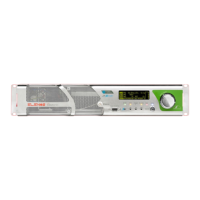15
fig.a
fig.b
Security
3.2 First aid
This paragraph is NOT a complete guide to first aid procedures, but only a summary that
can be used as a reference.
It is the responsibility of all personnel who use this equipment to be ready to admini-
ster adequate first aid and thus prevent avoidable loss of life.
3.2.1 Treatment of electrical burns
3.2.1.1 Major burns and cuts
• Cover the area with a clean cloth.
• Do not burst blisters, remove clothing and any particles of clothing that may be
stuck to the skin. Apply a suitable cream.
• Treat the casualty according to the type of shock.
• Get the casualty to hospital as quickly as possible.
• If arms or legs have been affected, hold them in an elevated position.
WARNING:
If medical assistance is not available within one hour, and the casualty is conscious and
is not trying to vomit, to give them a solution of salt and soda: 1 full teaspoon of salt
and half teaspoon of bicarbonate of soda (sodium bicarbonate) for every 250 ml of
water (neither hot nor cold). To allow the casualty to sip slowly 4 times (1/2 glass) over
a period of 15 minutes.
Stop if the casualty was vomiting. Do not give alcohol.
3.2.1.2 Less severe burns (1st and 2nd degree)
• Apply a cold (not freezing) gauze, using a cloth which is as clean as possible.
• Do not burst blisters, remove clothing and any particles of clothing that are stuck to
the skin. Apply a suitable cream.
• If necessary, give the casualty clean and dry clothing.
• Treat the casualty according to the type of shock.
• Get the casualty to hospital as quickly as possible.
• If arms or legs have been affected, hold them in an elevated position.
3.2.2 Treatment of electric shocks
3.2.2.1 If the casualty has lost consciousness
Lay the casualty on his back on a rigid surface.
A) Air ways (fig. a) :
• if unconscious, open the airways
• push back the forehead
• if necessary open the mouth
• check the breathing
B) Breathing (fig. b) :
• if not breathing, start artificial respiration
• incline the head
• close the nostrils
• apply mouth to the casualty’s mouth
• perform 4 quick respirations
• remember to start breathing again immediately

